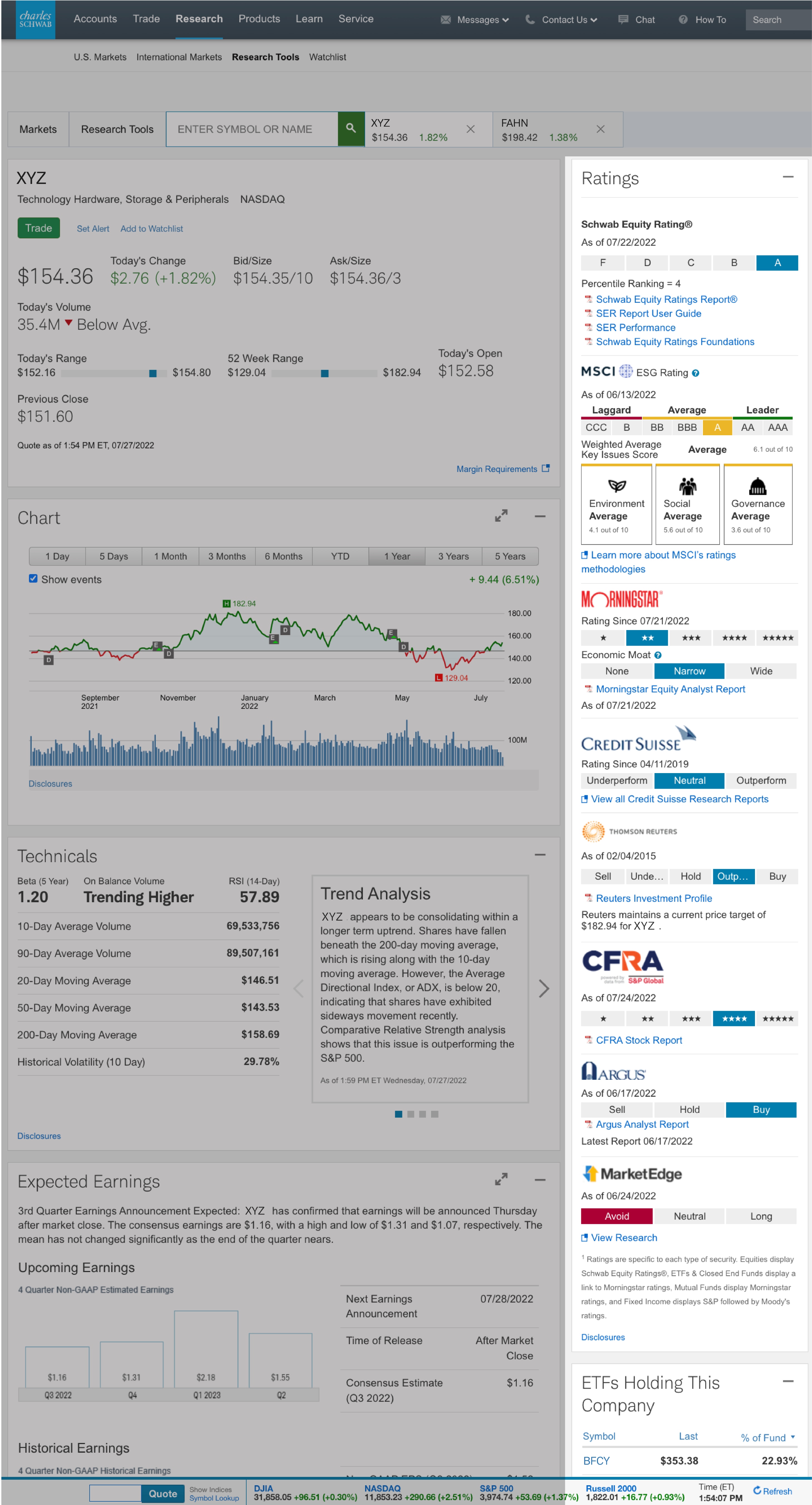
Every day, large institutional investors make buy and sell decisions based on a stock's fundamental values.
The price-to-earnings, or P/E ratio, meaning the ratio between the stock price and earnings per share, is one popular way to determine valuation. But just knowing the P/E is like being a football coach who only analyzes his opponent's offense and fails to consider its defense, special teams, and coaching philosophy. To really understand a stock's value and trade more effectively, investors need to learn about and apply some other tools as well as dig deeper into a company's fundamentals.
For one thing, P/E alone can be misleading.
How trustworthy is the price-to-earnings ratio?
The P/E ratio can sometimes steer investors in the wrong direction. Imagine two stocks—stock A and stock B—in the same sector. Stock A has a P/E of 10, and stock B has a P/E of 15. At first glance, stock A would seem to be a better value than stock B because investors can buy it for a lower price compared to earnings than its competitor.
Not so fast. The P/E ratio doesn't take into account other key factors that help determine a stock's price, including the company's growth.
For example, if stock A has a P/E of 10 and stock B's P/E stands at 15, it tells nothing about the growth trajectory of the companies. If stock B is growing at an 18% clip and stock A is pushing along at a 10% rate, many investors might prefer to pay 15 times for 18% growth than 10 times for 10% growth.
In other words, most metrics by themselves can't be used in a vacuum; you have to look at growth rates and risk together.
Price/earnings-to-growth ratio
The price/earnings-to-growth, or PEG, ratio tells a more complete story than P/E alone because it takes growth into account. Investors are often willing to pay a higher premium for greater earnings growth, whether it's from past growth or estimated future growth.
The lower the PEG ratio, the more undervalued the stock. Let's say that stock A, with its P/E of 10, has forward annual earnings growth estimated at 10% for the next five years. To determine the PEG ratio, the P/E ratio is divided by earnings growth, in this case yielding a PEG of 1. Stock B, with its P/E of 15, has forward annual earnings growth estimated at 20% over the next five years, for a PEG of 0.75. Stock B has a lower PEG than stock A, meaning that by this measure, it's actually the better value. Generally, a PEG below 1 means this metric considers a stock undervalued.
When a company doesn't have earnings, investors can compare its stock price to its sales to help determine value.
Price-to-book (P/B) ratio
Another helpful tool is the price-to-book, or P/B ratio, which compares a company's stock price to the value of its assets on the balance sheet. A lower P/B ratio can sometimes indicate that the stock is at a reasonable valuation.
Some investors value a stock by how much cash flow the company generates. They may monitor mergers and acquisitions in the company's industry to see the type of valuations given to the company's competitors. If the company pays dividends, investors can check the dividend yield and whether it's increasing.
How to find ratios and valuations for specific stocks
The P/E, PEG, and P/B ratios can be found on schwab.com. Log in to your account and select the Research tab, then select Research Tools. This brings up a screen where you can enter the stock symbol you want to research. Type in the symbol and select the magnifying glass. From there, scroll down to the Peers & Ratios Comparison section. Select Valuation, and you 'll see a screen like the one below.
Finding a stock's value

For illustrative purposes only. Past performance does not guarantee future results.
Stock analysts use multiple stats and tools to valuate stocks
All these tools are helpful, but investors who rely only on numbers to value a stock are like that football coach who knows all the offensive statistics of his opponent but doesn't research the opposing coach's decision-making history. A company isn't a football team, but the same thinking applies.
In some cases, a company has a terrific product, it's ahead of the market in terms of execution, has strong technology, or a strong brand name. Analysts take these things into account as part of the overall mix, which might also include these questions: Does it have the right set of products? Is its growth rate sustainable? How good is its management team?
Many times, the multiple you put on a stock is based on your comfort level in the execution. One stock may be growing 15% but deserves a 20 multiple. Another stock may be growing 15% but deserves only a 15 multiple.
These fundamentals can't be gleaned by looking at a valuation multiple. It takes research. To get a sense of how analysts view a company, log in to schwab.com and hover over the Research tab, then select Stocks under Research Tools. Enter a stock symbol and search. Once you've loaded up the company, look at the Ratings section.
Finding analyst reports

For illustrative purposes only. Past performance does not guarantee future results.
Which stock valuation method should you use?
Market strategists often choose the P/E valuation method—if they can only have one—because it's a quick reference point.
But they typically caution investors not to think of valuations techniques as a one-size-fits-all equation: Virtually all valuation techniques carry caveats for investors to look out for.
This material is intended for informational purposes only and should not be considered a personalized recommendation or investment advice. Investors should review investment strategies for their own particular situations before making any investment decisions.
All expressions of opinion are subject to change without notice in reaction to shifting market conditions. Data contained herein from third-party providers is obtained from what are considered reliable sources. However, its accuracy, completeness, or reliability cannot be guaranteed.
Examples provided are for illustrative purposes only and not intended to be reflective of results you can expect to achieve.
Market volatility, volume, and system availability may delay account access and trade executions.
Past performance of a security or strategy does not guarantee future results or success.
0423-3F2T

